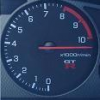Engine Oil Flush
Announcements
-
Similar Content
-
Latest Posts
-
By Murray_Calavera · Posted
Have a chat with the tuner, you'd want to drive the car straight there. -
By Harinder singh · Posted
My mechanic installed all the parts and then got it tuned which i think is around the corner from him -
By Harinder singh · Posted
Yeah. M taking it to work next and then straight to my mechanic and see if it happens. Else i will check it mysels as it will stop when i come back home..



Recommended Posts
Create an account or sign in to comment
You need to be a member in order to leave a comment
Create an account
Sign up for a new account in our community. It's easy!
Register a new accountSign in
Already have an account? Sign in here.
Sign In Now